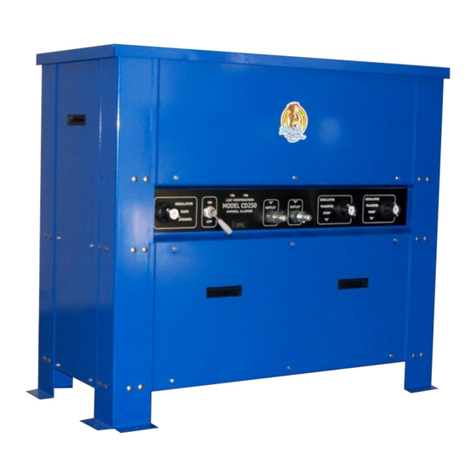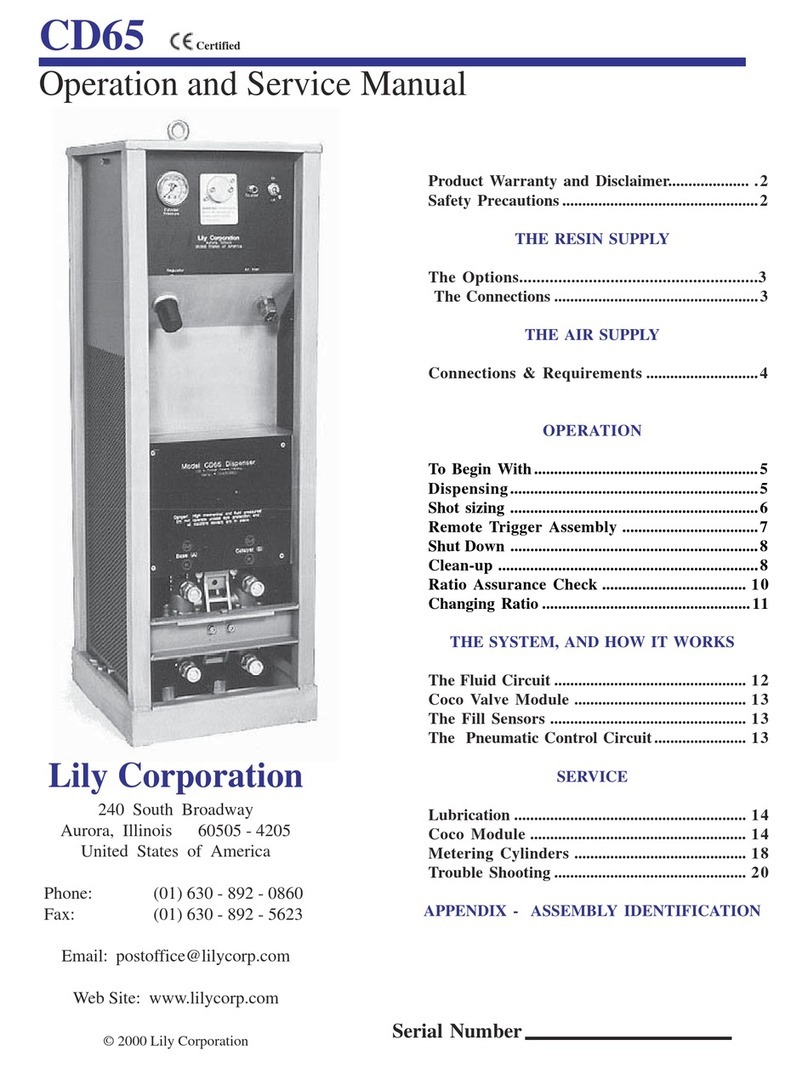
8 Ver. 1.6
Operation
Shut Down
Because the resin components are not joined within the dispenser, no clean-up of the
dispenser is required. And, most epoxy resins can be left within a system indefinitely.
However, there is a very important step to be taken at shut-down if (a), a low viscosity resin
is being used, and (b), a mixer or manifold is fixed directly to the outlet fittings of the Coco
module. The procedure is called “burping”. Burping is necessary because the base and
catalyst components of most low viscosity resins have a much different specific gravity. Like
vinegar and oil in salad dressing, one is heavier than the other, and quickly sinks to the
bottom. Until they are mixed, the base component tends to sink beneath the catalyst. When
the components hover together within a mixer fixed to the outlet valves, it is possible within a
very few minutes for the base component to settle and pond out beneath the catalyst. With
sufficient time, it may enter the catalyst outlet valve with costly results as it hardens
overnight.
Clean Up
Use the Gusto Purge Assembly (Page #30) to clean the mixer, tubing, FF-2 valves, and other items
exposed to catalyzed resin. Complete steps 1 and 2 below to charge the Gusto tank before starting
injection. It is a precaution which allows clean-up in the event the air supply is lost due to compressor
failure. For with the Gusto tank fully charged with air, there is sufficient energy within the tank to
clean up at least the major components.
1. Vent the Gusto tank by rotating the selector valve so that it points away from
the adapter block, and towards the bronze filter. Remove the lid and pour about
one-half gallon of Acetone or Methyl Ethyl Ketone (MEK) solvent into the tank.
Do not use petroleum based solvents such as toluol, xylol, mineral spirits or
naptha, as they will destroy the Gusto lid seal. Do not fill the tank, as this will
reduce the volume of air available for an emergency clean-up.
2. Replace the lid and secure it with its bale. Rotate the selector valve 90
degrees so that it is closed to the inlet and outlet. Connect the air supply and
pressurize the tank at the maximum pressure available. Set the tank aside until
time to clean-up.
3. Next “burp” the CD15. To do this simply dispense a few ounces of material into
a waste container immediately after removing the mixer from the dispenser. This
will flush any base resin that may have entered the catalyst fitting or valve.
4. Immediately after burping the dispenser and disconnecting the mixer, cap the
dispenser outlet fittings with the caps secured at the magnetic bracket, Then
secure the mixer to the manifold at the Gusto tank. Disconnect the air supply from
the dispenser, and connect it at the Gusto air inlet. Close the FF-2 valve, and
then rotate the selector valve to point to the mixer.





























